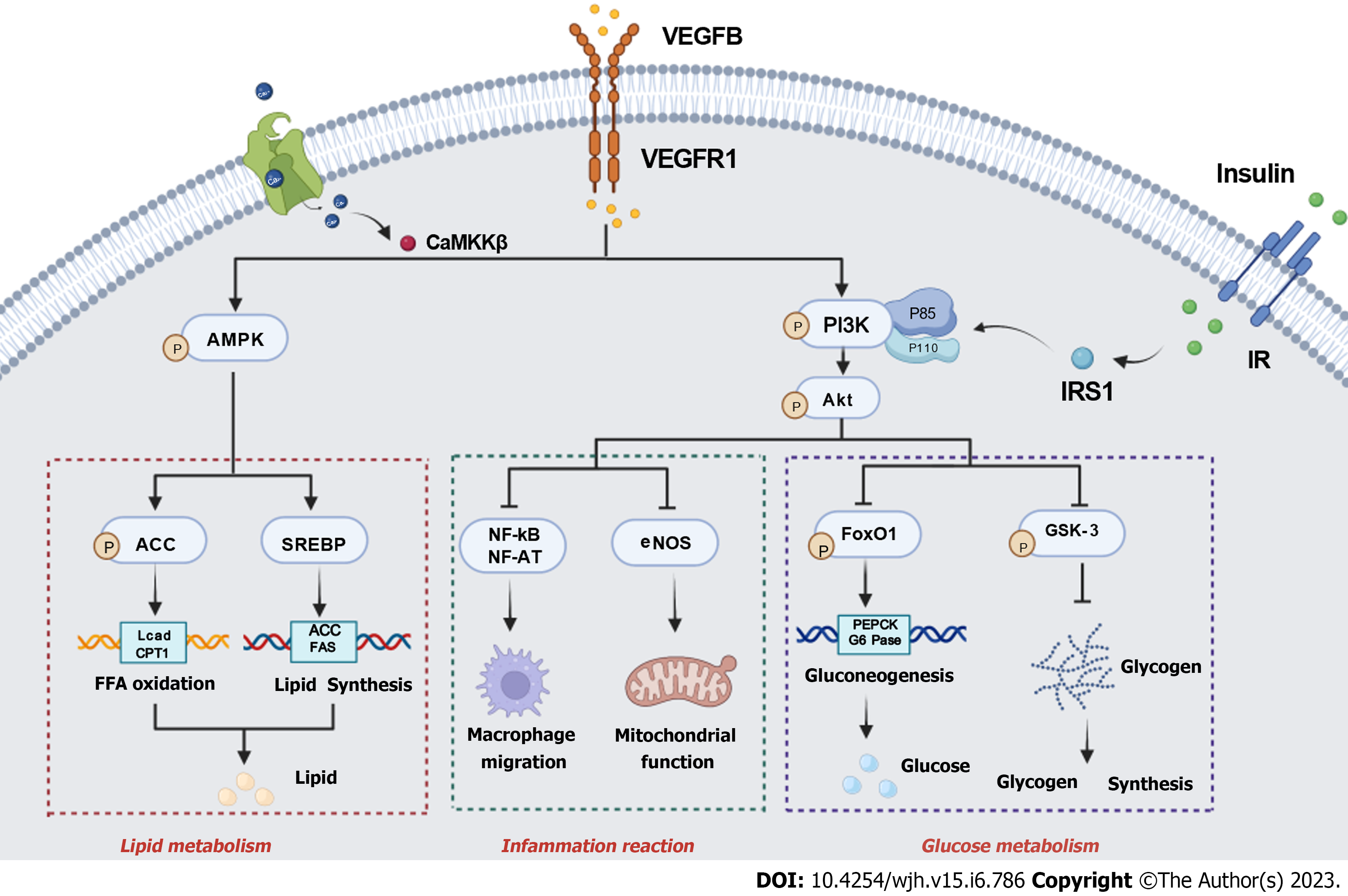Copyright
©The Author(s) 2023.
World J Hepatol. Jun 27, 2023; 15(6): 786-796
Published online Jun 27, 2023. doi: 10.4254/wjh.v15.i6.786
Published online Jun 27, 2023. doi: 10.4254/wjh.v15.i6.786
Figure 4 Vascular endothelial growth factor B participates in the “multiple-hit” of nonalcoholic fatty liver disease.
Vascular endothelial growth factor B (VEGFB) regulates lipid metabolism, inflammation reaction, and glucose metabolism, which co-exist in the nonalcoholic fatty liver disease progression. VEGFB activates the AMPK phosphorylation to regulate free fatty acid oxidation and lipid synthesis. Long-term lipid metabolism disorders will cause inflammatory reactions and glucose metabolism disorders. VEGFB promotes the phosphorylation of protein kinase B (AKT) via combining with the VEGFR1 to affect macrophage migration and mitochondrial inflammation reaction. Meanwhile, VEGFB/VEGFR1 also plays an important role in inhibiting gluconeogenesis and promoting glycogen synthesis by activating the phosphorylation of AKT to regulate glucose metabolism. CaMKKβ: Calmodulin-dependent protein kinase β; VEGFR1: Vascular endothelial growth factor receptor-1; VEGFB: Vascular endothelial growth factor B; IR: Insulin receptor; IRS1: Insulin receptor substrate-1; PI3K: Phosphoinositide 3-kinase; AKT: Protein kinase B; AMPK: Adenosine 5‘-monophosphate (AMP)-activated protein kinase; ACC: A carboxylase; CPT1: Carnitine palmitate transferase-1; Lcad: long-chain acyl-CoA dehydrogenase; SREBP: Sterol-regulatory element-binding protein; FAS: fatty acid synthase; NF-kB: Nuclear factor-kappa B; NF-AT: Nuclear factors of activated T; eNOS: endothelial nitric oxide synthase; FoxO1: Forkhead box protein-1; GSK-3: Serine/threonine kinase-3; PEPCK: Phosphoenolpyruvate carboxykinase; G6Pase: Glucose 6 phosphatase;
- Citation: Li YQ, Xin L, Zhao YC, Li SQ, Li YN. Role of vascular endothelial growth factor B in nonalcoholic fatty liver disease and its potential value. World J Hepatol 2023; 15(6): 786-796
- URL: https://www.wjgnet.com/1948-5182/full/v15/i6/786.htm
- DOI: https://dx.doi.org/10.4254/wjh.v15.i6.786









